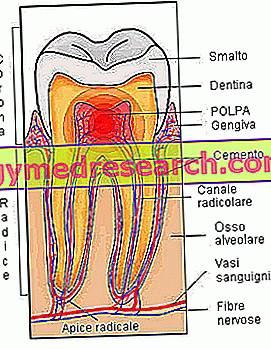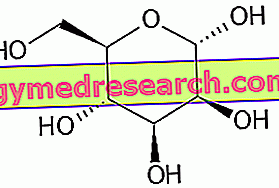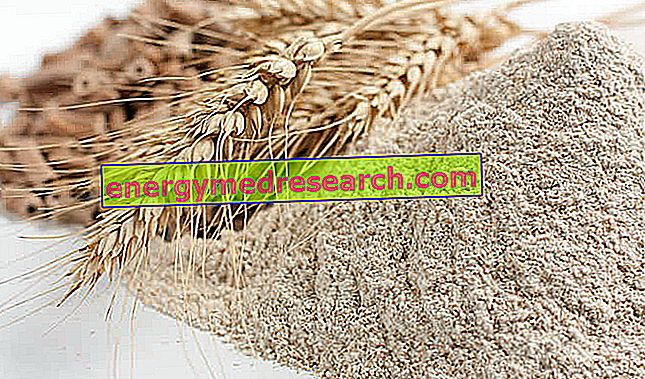What is pulpitis?
Pulpitis is an inflammatory process of the dental pulp which, in jargon, is called "inflammation of the nerve of the tooth ."
To understand...
The dental pulp is the most internal part of the tooth, rich in nerve endings, arterioles, venules and odontoblasts (cells used for the production of dentin).

Pulpitis treatment consists of minimizing symptoms (pain) and removing the cause responsible for the inflammatory process. The cure for pulpitis is relatively simple; however, when the inflammation is not accurately treated, the tooth can undergo a degenerative-necrotic process (losing its vitality). In such circumstances, pulpitis requires devitalization, partial pulp removal or tooth extraction.
Causes
In most cases, pulpitis is the immediate consequence of cariogenic damage. Caries is a destructive process of the tooth that causes the progressive demineralization of enamel and dentin. The bacteria present in the oral cavity, fond of sugars, produce acid substances starting from the fermentation of carbohydrates: it is precisely these acid products that break through the enamel, reaching the dentin and affecting the pulp of the tooth until it triggers pulpitis.
Fermentation of sugars by oral bacteria → production of acidic substances that pierce the enamel → damage propagation at the dentin level → caries affects the dental pulp → pulpitis
In addition to tooth decay, pulpitis can originate from:
- Tooth trauma
- Periodontitis (or pyorrhea)
- Repeated invasive dental procedures
- Thermal insults derived from dental procedures (eg laser bleaching with CO 2 lamps)
- Bruxism
- Dental malocclusions
- Incorrect chewing
- Poor oral hygiene
Symptoms and classification
To learn more: Pulpitis Symptoms
The characteristic symptom of pulpitis is toothache, usually very intense, acute and pulsating, which can be persistent or intermittent. Most of the time, in the presence of pulpitis, the patient experiences a fierce pain in his teeth which, however, finds it difficult to locate in a precise point.
In almost all the pulpits, the pain is aggravated by stimuli of different nature, such as chewing, hot / cold and sugary foods (in particular, from chocolate).
Please note
In the earliest stages of the disease, pulpitis can be asymptomatic. For this reason, the annual check-up by the dentist is indispensable for early diagnosis of any dental disorders (such as pulpitis). In such circumstances, it is therefore possible to act accordingly with timely care before the symptoms become unbearable and the damage irreversible.
Depending on the degree of inflammation and the depth of the pulp lesion, two forms of pulpitis can be distinguished:
- REVERSIBLE PULPITE: it is a moderate inflammation of the dental pulp which, if treated early and in an appropriate way, preserves its healing capacity. The pain that characterizes the reversible pulpitis - accentuated by heat or cold, chewing or sugary foods - disappears immediately after the stimulus is removed.
- IRREVERSIBLE PULPITIS: occurs when the reversible pulpitis is not treated in time. The irreversible form is characterized by extremely severe pulp inflammation, accompanied by a degenerative process that progressively evolves into necrosis of the dental pulp. An inadequately treated pulpitis can cause abscess, periodontitis, granuloma or cysts. Toothache associated with irreversible pulpitis persists even after the removal of mechanical (chewing), chemical (sugar) or thermal stimuli.
Pulpitis: care
A "shock" treatment is essential to prevent the pulpitis from degenerating into its irreversible form.
The cure for pulpitis uses:
- Analgesic drugs to relieve pain
- Medical strategies aimed at removing the cause of pulpitis
First of all, pain can be managed by administering pain-relieving drugs that can mask the symptoms and relieve the patient. While paracetamol and NSAIDs are generally sufficient to effectively alleviate mild to moderate pain, codeine or other opiates are necessary in the event of unmanageable and ferocious pain.
Next to the pharmacological treatment, the dentist proceeds with medical treatment, consisting of a specific operation to remove the cause of pulpitis. When pulp involvement is limited, pulpitis should be cured simply by eliminating cavities. Otherwise, in the presence of severe inflammation and pulp necrosis, it may be necessary to partially or totally remove the pulp of the tooth (devitalization or possible removal of the tooth).
Prevention
The best cure for pulpitis is prevention. Given that most of the pulpits are the result of cariogenic processes, the adoption of some simple dietary measures, combined with the correction of an incorrect lifestyle, can prevent the onset of pulpitis.
To minimize the risk of pulpitis it is necessary ...
- Take care of your teeth every day:
- Brush your teeth at least three times a day with appropriate toothpastes. Fluoride-containing toothpastes are best suited for preventing pulpitis because they strengthen tooth enamel
- Brush the teeth from the gum towards the tooth, never in reverse
- Limit the use of toothpastes formulated with abrasive whitening products, which can damage the enamel, thus favoring tooth decay and pulpitis
- Floss at least once a day
- Replace the toothbrush every 2-3 months
- Use anti-plaque seals
- Limit the consumption of sweets and sticky foods - such as jam, honey and chocolate - that can adhere to the enamel and favor the entry of bacteria
- Have regular dental check-ups at least once or twice a year. Routine visits can surprise any child with asymptomatic inflammatory processes, including pulpitis, and remedy them before the damage becomes irreversible.



